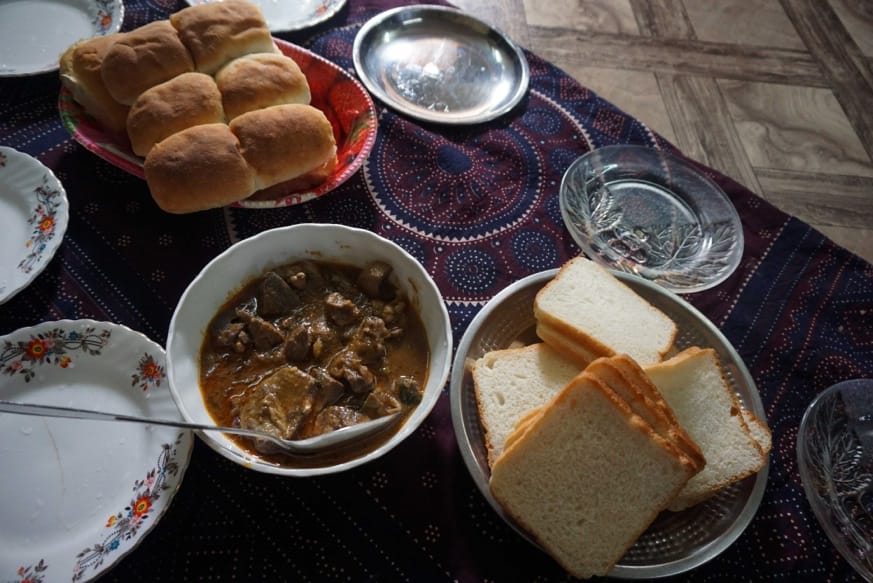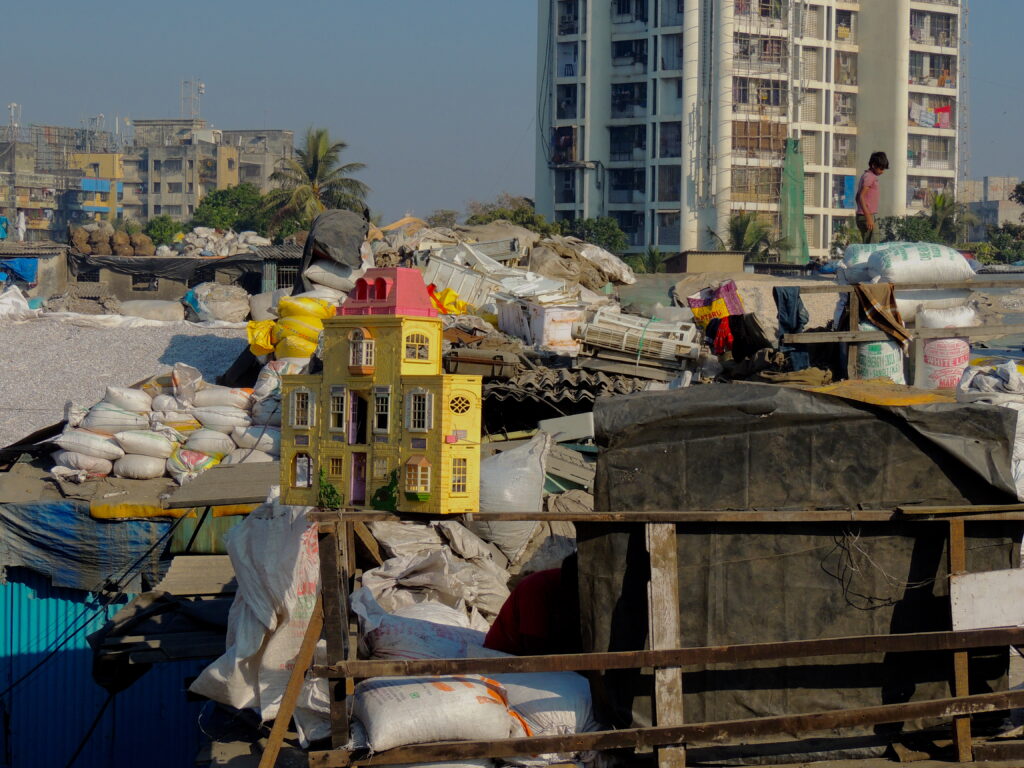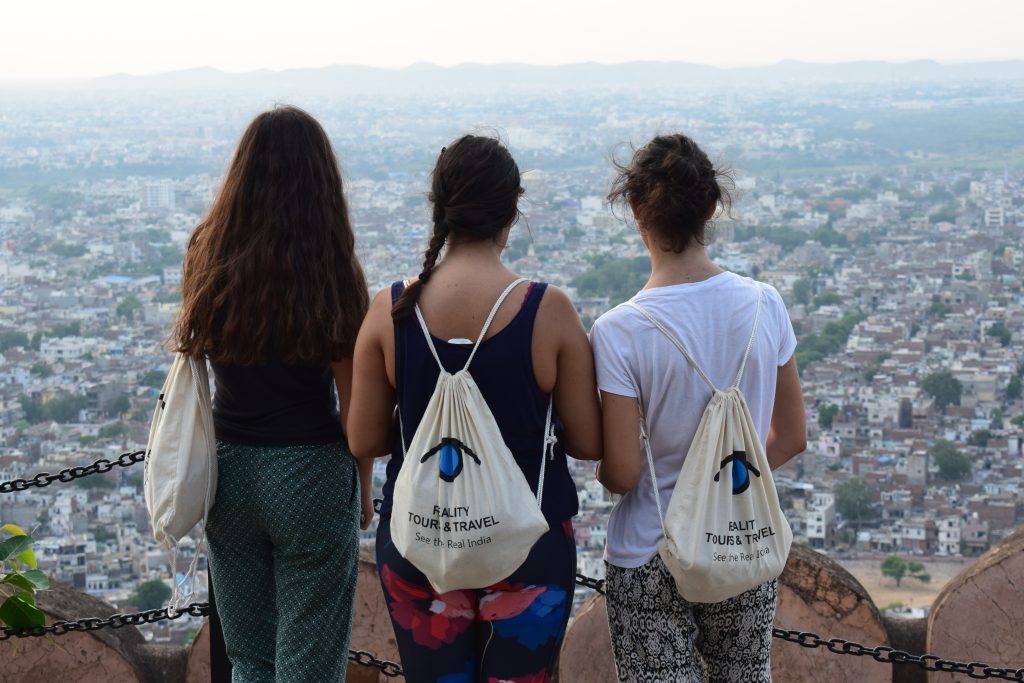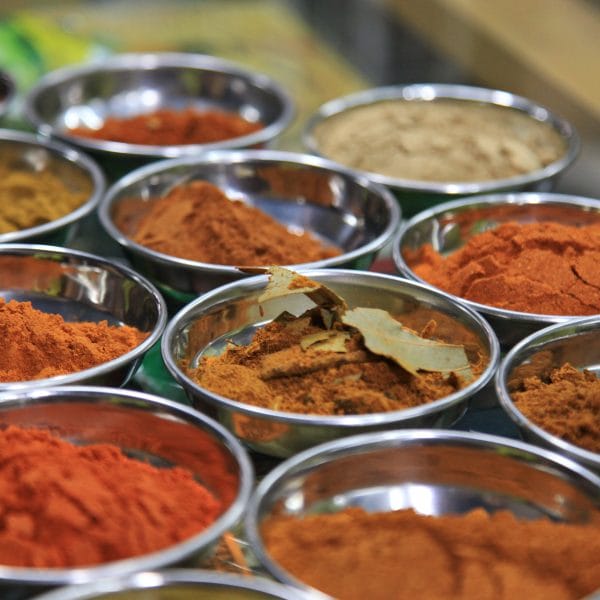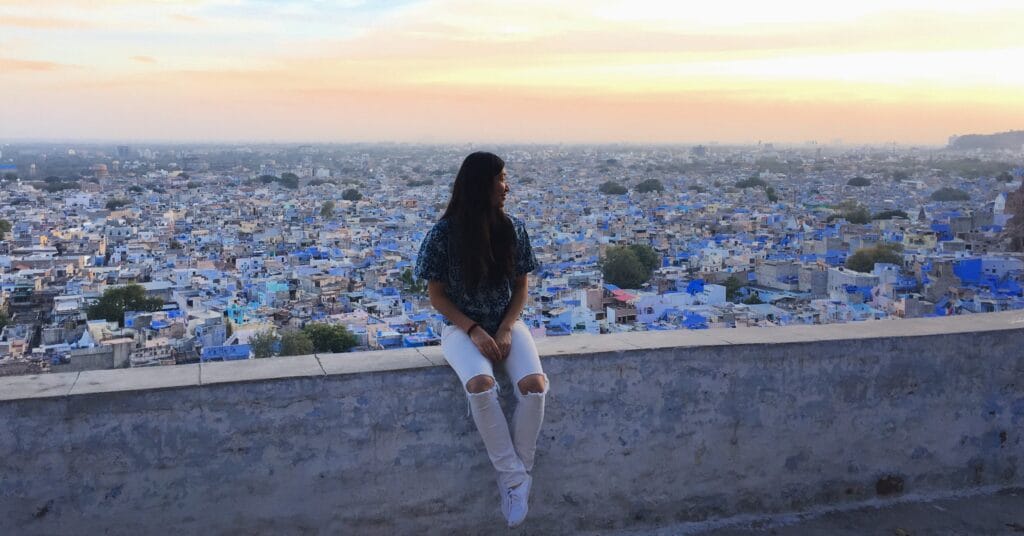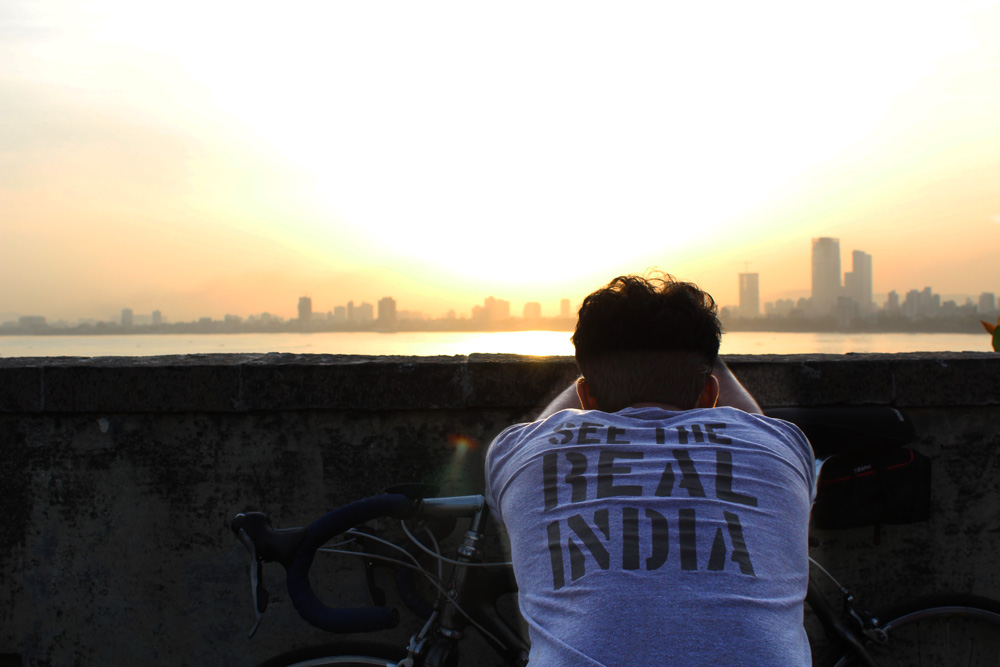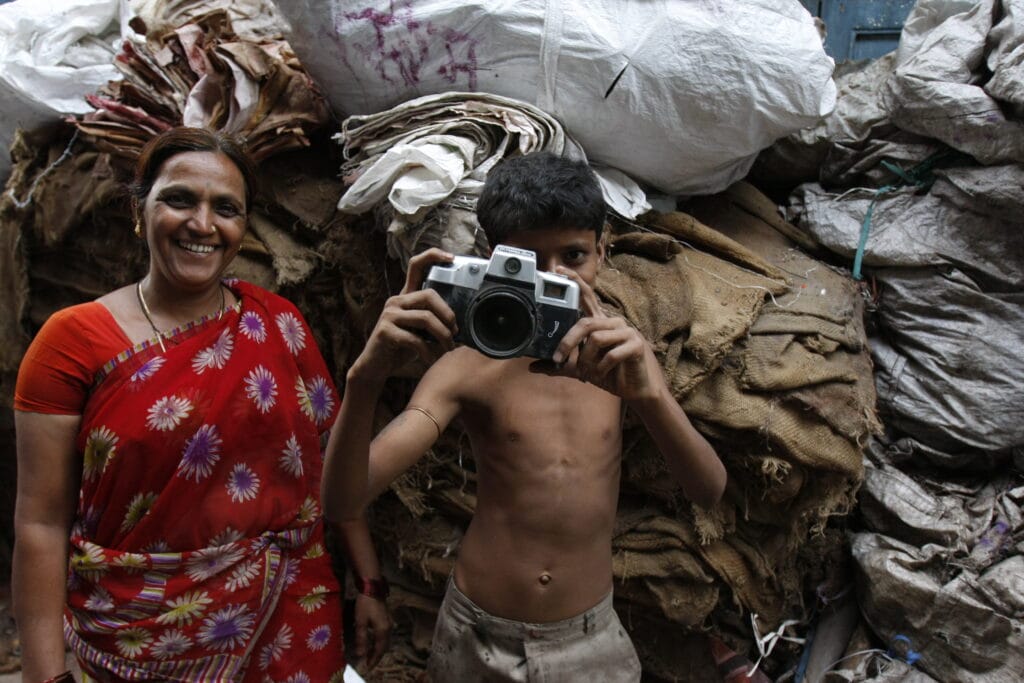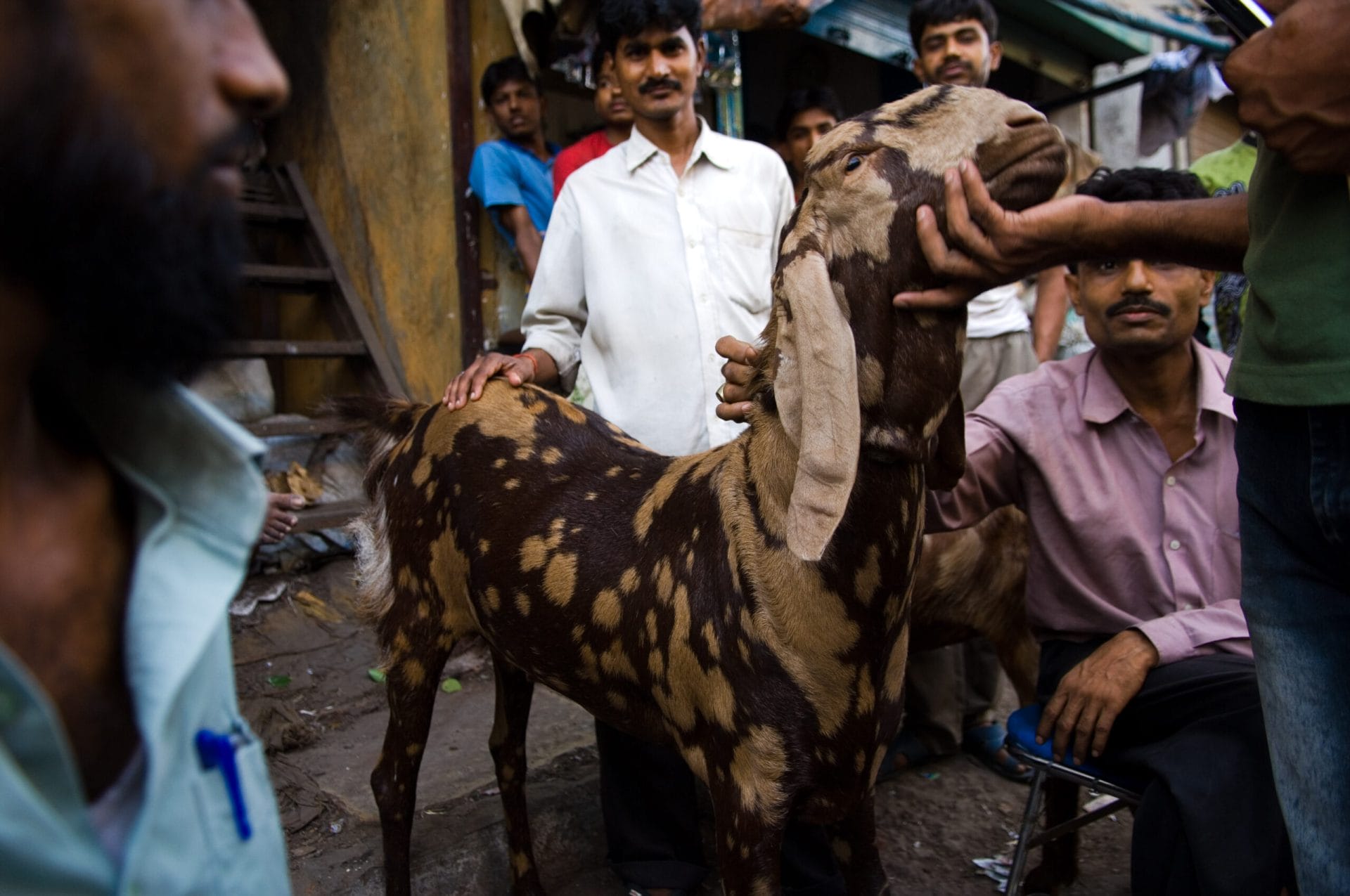The morning of Eid, after repeatedly assuring us that it wouldn’t be an inconvenience, Asim kindly invited the foreigners from the office to his family home nearby Dharavi for Eid al-Adha. I’ll admit I was a bit nervous for this: I had never seen anything sacrificed before. We wound our way through the narrow streets to Asim’s home and greeted his extended family. Everyone was sitting around the living room in their Sunday best casually chatting and surfing the internet on their smart phones. The scene looked like it could have been the living room of any of my family’s holidays, except for one key difference: there was a skinned goat cut in half sitting in the center of the living room. The head and legs were on a platter underneath a chair. What a way to start off the week!
The goat was Asim’s relatives who had come to celebrate with them and sacrifice their goat at his house. We were told that the other goat would be sacrificed later. We were immediately served some delicious kheer, an extremely sweet Indian rice pudding with nuts. The kheer’s deliciousness was not diminished by the dissected goat carcass 2 feet from my feet.
Then came the part I was nervous for: the sacrifice. The deed was going to be done right in the middle of the small lane which basically means on people’s porches. The goat was forcibly brought down onto the ground with two men holding the front and rear legs. It was then swung around so it was facing West, in the direction of Mecca. Finally a third guy came over brandishing an extremely sharp blade. The blood was a much brighter red than I would have expected. If I had only seen the blood and nothing else, I probably would have asked why there was fake blood there. It also twitched more afterward than I would have thought. It was like a dog running while it’s dreaming. It was a fairly shocking experience but at the same time I thought about how sheltered of a life I have lived to have never seen something like this before. Or perhaps that’s progress?
Every year one member of the family is chosen to sacrifice the goat and one person is chosen for the goat to be killed in honor of. The catch: no one knows until the time the goat is sacrificed. Asim later admitted that it is really difficult waking up that morning and not know whether or not it is going to be you to sacrifice the goat. This year, the goat was sacrificed in honor of Asim.
The butcher immediately descended on the goat and began chopping parts off and skinning it. Once it was skinned and had the organs removed, it was chopped in half and moved into the house. The butcher continued chopping up the goat inside with everyone looking on. He split it into 3 piles as tradition dictates: one for Asim’s family, one for Asim’s extended family, and one for the poor. The hide is donated to an orphanage that will then sell it to leather factories. The “pee bag,” we were told, goes to the crows.
The butcher was in a hurry and tried to do his work as fast as possible. For each goat they can charge up to Rs 1,500 (about $25) and if they hurry they can do about 20 that morning. But he still had to do his job and the grandmother sat right behind him to ensure that he did it right. From one month of hindi classes, I could pick up 3 key words from her chiding: “small,” “work,” “money.” In other words, cut it into small pieces or you’re not getting paid in full.
The traditional morning meal on Eid is a curry with the organs. Then the rest of the meat is cooked into other dishes such as biriyani for that nights dinner and the successive days. While we waited for the food to cook, Asim’s 6 year old nephew treated us to a solo bollywood singing and dancing performance. The performance was impressive and unbelievably cute but his courage to do it in front of 6 foreigners was astounding.
Then the food came out: fresh organ curry with homemade pav (breadrolls). It reminded me of a French pot au feu and I realized that while many American might wrinkle their noses at a lot of what had transpired today, I think the French would be totally on board, except for the spiciness. After the meal we profusely thanked Asim for his generosity and patience and headed into the office for work.
If you’d like to see how the preparations began, we’ve shared the full experience of visiting Mumbai’s Deonar Goat Market in Part 1 of our Eid al-Adha story.
More so than other experiences I’ve had in India so far, this holiday really challenged me to keep an open mind, reserve judgment, and try to understand another culture, tradition and people. When sacrificing animals is involved it is easy to quickly write it off. But if we kill millions of animals everyday for our food, then I think it is also part of our responsibility as meat eaters to see and come to terms with the process. The way we killed and then ate a goat today was by far more direct and graphic than I am used to. But compared to the mass production of meat that we have today, this seems much more humane and safe then, say, chicken nuggets in the frozen food aisle. And of course this isn’t what the festival is about at all. It’s about people of a certain faith demonstrating their devotion to god. It’s also a really nice family gathering that kept reminding me of Thanksgiving or Christmas (plus a goat carcass).
Want to go beyond the tourist trail and share a meal with a local family in Dharavi?
Join our Dharavi Tour & Family Lunch to experience community, conversation, and authentic flavors in the heart of Mumbai.
For another powerful and vibrant celebration rooted in faith and community, check out our experience of Ganesh Chaturthi – Mumbai’s biggest festival.
